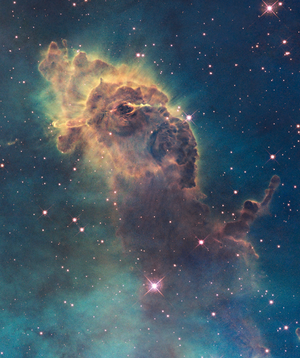Difference between revisions of "Nebula"
| Line 11: | Line 11: | ||
: [[Nebula]]e can stretch many [[Light Year|light years]] across and have enough [[mass]] to form many [[star]]s and [[Solar System|solar systems]]. | : [[Nebula]]e can stretch many [[Light Year|light years]] across and have enough [[mass]] to form many [[star]]s and [[Solar System|solar systems]]. | ||
: Small regions of a [[nebula]] can begin to collapse under [[gravity]] to form a [[star]]. | : Small regions of a [[nebula]] can begin to collapse under [[gravity]] to form a [[star]]. | ||
| + | |||
| + | ===References=== | ||
| + | ====AQA==== | ||
| + | |||
| + | :[https://www.amazon.co.uk/gp/product/0008158770/ref=as_li_tl?ie=UTF8&camp=1634&creative=6738&creativeASIN=0008158770&linkCode=as2&tag=nrjc-21&linkId=ec31595e720e1529e49876c3866fff6e ''Nebula, pages 275, 280, 284-5, 287-8, GCSE Physics; Student Book, Collins, AQA ''] | ||
Revision as of 16:43, 9 November 2019
Contents
Key Stage 3

An image of a small section of the Eagle Nebula.
Meaning
A nebula is huge cloud of gas and dust where new stars are born.
Key Stage 4
Meaning
A nebula is a huge cloud of gas and dust stretching across space which collapses due to gravity to form stars.
About Nebulae
- Nebulae can stretch many light years across and have enough mass to form many stars and solar systems.
- Small regions of a nebula can begin to collapse under gravity to form a star.